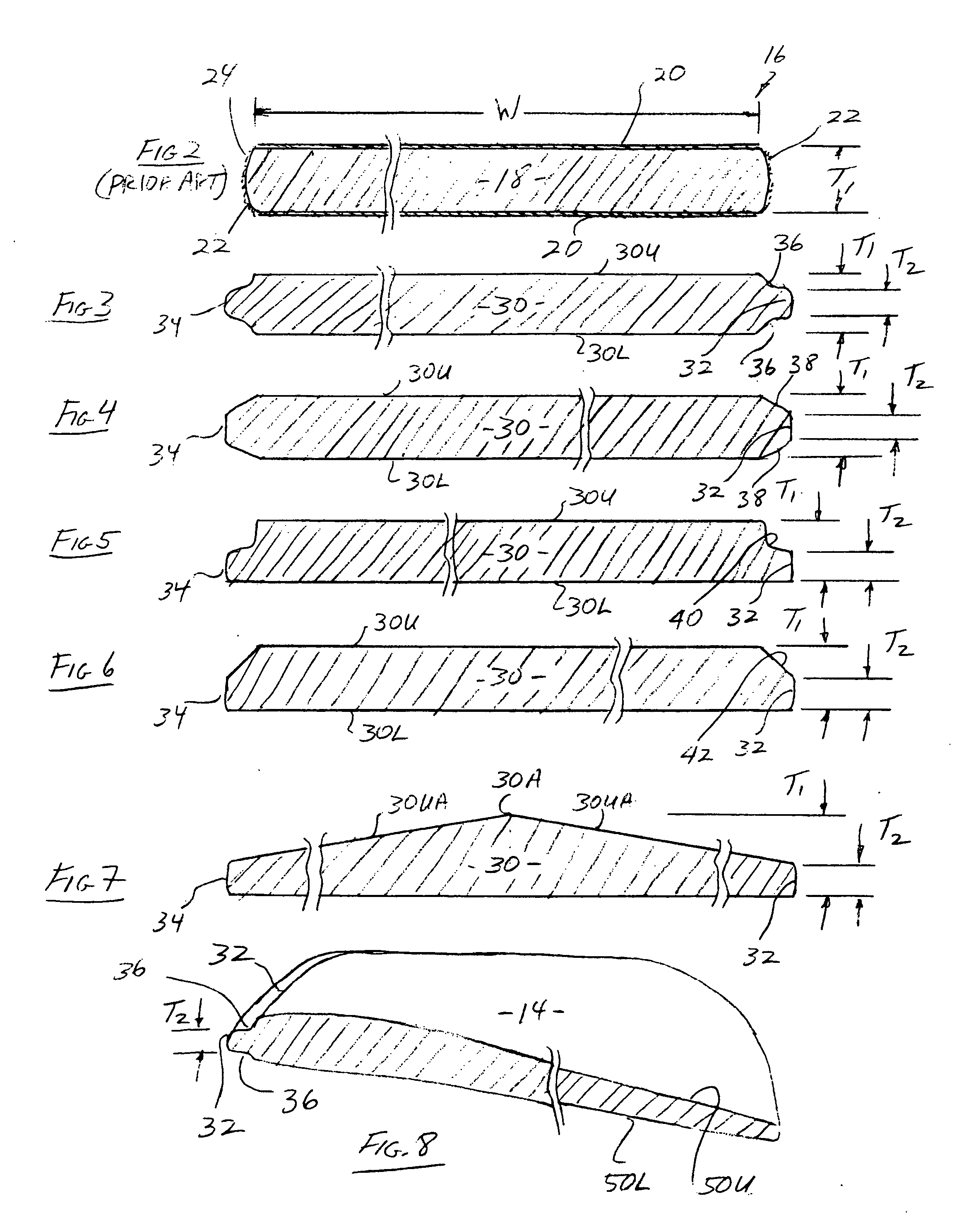Ceiling fan with high efficiency ceiling fan blades
- Summary
- Abstract
- Description
- Claims
- Application Information
AI Technical Summary
Benefits of technology
Problems solved by technology
Method used
Image
Examples
Embodiment Construction
[0030]FIG. 1 is a side elevational view of a conventional ceiling fan 10 comprising an electric motor assembly 12 and a plurality of ceiling fan blades 14 connected to the rotor of the motor assembly 12 by means of ceiling blade brackets 16. The ceiling fan 10 is intended to be connected by means of a hanger and down rod assembly 18 to the ceiling 20 of a room. During operation in one direction, the rotating ceiling fan blades 14 circulate air downwardly from the ceiling 20 (typically during summer months). During operation in the reverse direction, the rotating ceiling fan blades 14 circulate air upwardly toward the ceiling 20 (typically during winter months). In either direction, the objective is to create a circulatory flow of air throughout the room to thereby reduce energy costs.
[0031]FIG. 2 is a cross sectional view of a conventional ceiling fan blade 16 manufactured from an MDF material. More particularly, an MDF fan blade 16 comprises a generally planar elongated configurat...
PUM
 Login to View More
Login to View More Abstract
Description
Claims
Application Information
 Login to View More
Login to View More - R&D
- Intellectual Property
- Life Sciences
- Materials
- Tech Scout
- Unparalleled Data Quality
- Higher Quality Content
- 60% Fewer Hallucinations
Browse by: Latest US Patents, China's latest patents, Technical Efficacy Thesaurus, Application Domain, Technology Topic, Popular Technical Reports.
© 2025 PatSnap. All rights reserved.Legal|Privacy policy|Modern Slavery Act Transparency Statement|Sitemap|About US| Contact US: help@patsnap.com



